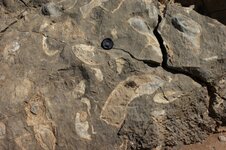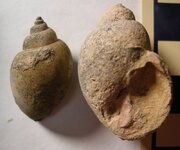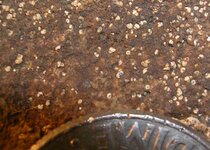- Joined
- Mar 7, 2009
- Messages
- 542
That’s very interesting. There’s a field workshop on this subject (“Recovery of ecosystems after the Permian-Triassic mass extinction”) here in Muscat later this month: http://www.igcp572.segs.uwa.edu.au/node/246
I came across these monster (see lense cap for scale) megalodont bivalves from later in the Triassic the day before yesterday (I was looking for prehistoric rock art near the town of Al Hamra).
I came across these monster (see lense cap for scale) megalodont bivalves from later in the Triassic the day before yesterday (I was looking for prehistoric rock art near the town of Al Hamra).




 to TONMO Cindy. Nice gastropods and bivalve fossils you've found, keep looking, there should be some ammonites around there.
to TONMO Cindy. Nice gastropods and bivalve fossils you've found, keep looking, there should be some ammonites around there. 